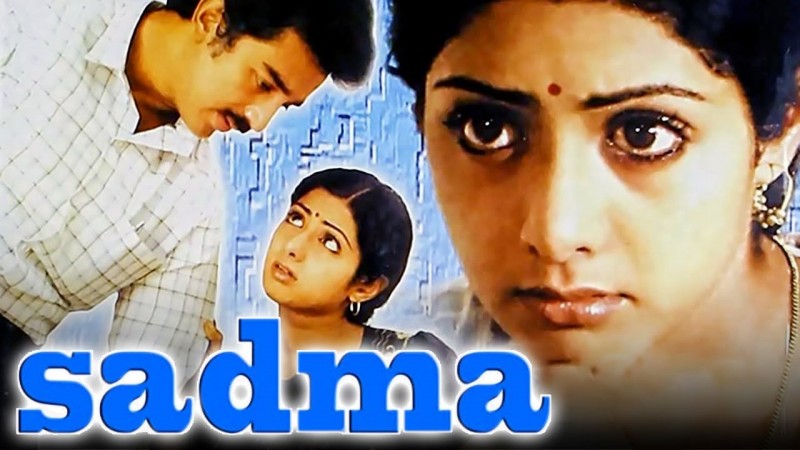
Cinema has the ability to engross viewers in new worlds, evoke strong feelings, and start conversations. Certain films stand out in the diverse world of Indian cinema not only for their skill as storytellers but also for the remarkable language journeys they take. One such engrossing story is that of the 1983 Hindi film "Sadma," which starred Sridevi and Kamal Hassan. When examined more closely, it becomes clear that "Sadma" was not only an adaptation but also a shot-by-shot remake of the 1982 Tamil film "Moondram Pirai." This article explores the similarities, subtle differences, and the cinematic magic that cut across linguistic barriers as it delves into the enchanted worlds of these two movies.
'Moondram Pirai' (1982): "Moondram Pirai," a moving Tamil drama directed by Balu Mahendra, focused on the romance between a young woman named Bhagyalakshmi (Sridevi) and a teacher named Srinivas (Kamal Hassan). After a traumatic event, Bhagyalakshmi regresses to a childlike state of mind, and Srinivas takes on the role of her caregiver, the plot takes an unexpected turn.
'Sadma' (1983): Balu Mahendra himself directed this film, and it mirrors the spirit of "Moondram Pirai." The delicate relationship between Nehalata (Sridevi) and Somu (Kamal Hassan) is expertly depicted in the movie. After a terrifying accident causes Nehalata to lose her memory, the story takes an emotional turn as Somu works to restore her memories.
The remarkable fidelity to the source material is what distinguishes "Sadma" from other films. A shot-by-shot remake of "Moondram Pirai" is the result of director Balu Mahendra's meticulous replication of the dialogue, emotions, and scenes from the original film. This commitment made sure that the magic and soul of the Tamil original were preserved in the Hindi version. In both "Sadma" and "Moondram Pirai," the relationships and emotions that developed on screen were compelling and heartfelt.
The unmatched performance of Sridevi was the driving force behind both movies. She did an extraordinary job of capturing the childlike woman with amnesia. Both characters benefited greatly from Sridevi's talent for expressing emotions, nuance, and vulnerability. Her performances played a major role in the emotional resonance that these movies managed to achieve.
The Hindi film "Sadma" was inspired by the success of the English film "Moondram Pirai," which transcended linguistic boundaries. This was evidence of the ubiquity of emotions and the capacity of storytelling to cut across linguistic and geographical boundaries. In addition to making the story more widely known, "Sadma" gave people who are not familiar with regional cinema a chance to see the magic of "Moondram Pirai."
'Moondram Pirai' and 'Sadma' both made an enduring impression on Indian cinema. Their stories, performances, and emotional nuance have cemented their status as independent classics. These movies exemplified the collaborative nature of Indian cinema, which allows for the adaptation of stories into various languages and appeals to a wide range of viewers.
The 1983 film "Sadma" is proof that movies have the ability to recreate emotional worlds in other languages. The shot-by-shot remake of "Moondram Pirai" (1982) highlights not only the creative genius of the filmmakers but also the timeless themes that connect with viewers from all backgrounds and languages. The shared journey of these two movies honors the power of narrative, the craft of filmmaking, and the enduring legacy of two works of art that have stood the test of time.
From Hollywood to Bollywood: 'Abhimaan' (1973) Weaves Indian Dreams Inspired by 'A Star Is Born'
'Mera Joota Hai Japani' Surprises Audiences in Deadpool's Opener